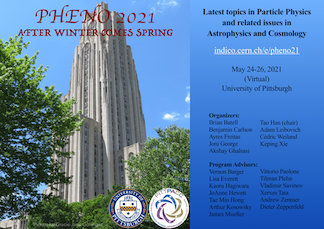Speaker
Description
We study the phenomenon of gravitational particle production as applied to a scalar spectator field in the context of α-attractor inflation. Assuming that the scalar has a minimal coupling to gravity, we calculate the abundance of gravitationally-produced particles as a function of the spectator's mass $m_χ$ and the inflaton's α parameter. If the spectator is stable and sufficiently weakly coupled, such that it does not thermalize after reheating, then a population of spin-0 particles is predicted to survive in the universe today, providing a candidate for dark matter. Inhomogeneities in the spatial distribution of dark matter correspond to an isocurvature component, which can be probed by measurements of the cosmic microwave background anisotropies. We calculate the dark matter-photon isocurvature power spectrum and by comparing with upper limits from Planck, we infer constraints on $m_χ$ and α. If the scalar spectator makes up all of the dark matter today, then for α=10 and $T_{RH}=10^4 \mathrm{GeV}$ we obtain $m_χ>1.8×10^{13} \mathrm{GeV}≈1.2 m_ϕ$, where $m_ϕ$ is the inflaton's mass.
